Settling basins, lagoons, or ponds are common ways to treat wastewater with suspended solids and colloids. Over time the particles will fall out of liquid suspension through sedimentation resulting in clean water for reuse.
It’s widely used because it’s simple and relatively cheap. Here you can see several ponds at an aggregate production site.

Common Settling Pond Issues
Though they’re simple and widely used, settling ponds alone are not always the most efficient way to remove solids from your process water.
Sediment That Settles Slowly
One of the biggest issues with settling ponds is the time it can take for sediment and colloids to fall out of liquid suspension. Below is a simple chart displaying the time it takes different particles to settle one foot.
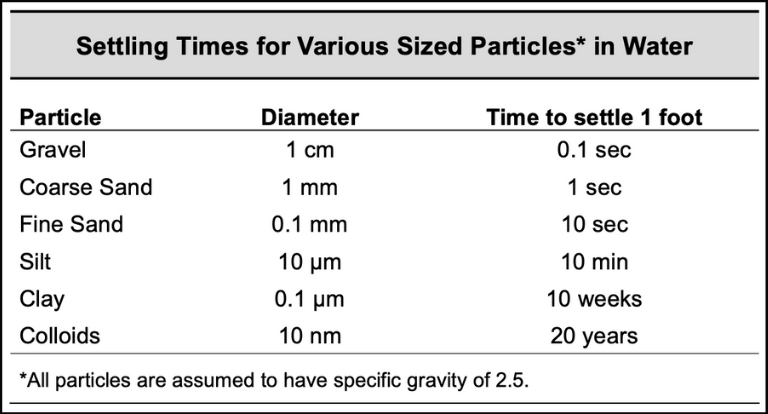
The longer it takes for particles to settle, the longer you have to wait for clean water. If you can’t access clean water, you can’t run your wash plant. It’s not uncommon for operations to shut down production while they wait for their ponds to settle.
Prime Real Estate
Basins and ponds can take up valuable production space. You may need several large ponds depending on the size of your operation, the type of mineral you’re extracting, and your washing process. Unfortunately, the ponds will reduce space for equipment and product stacking.
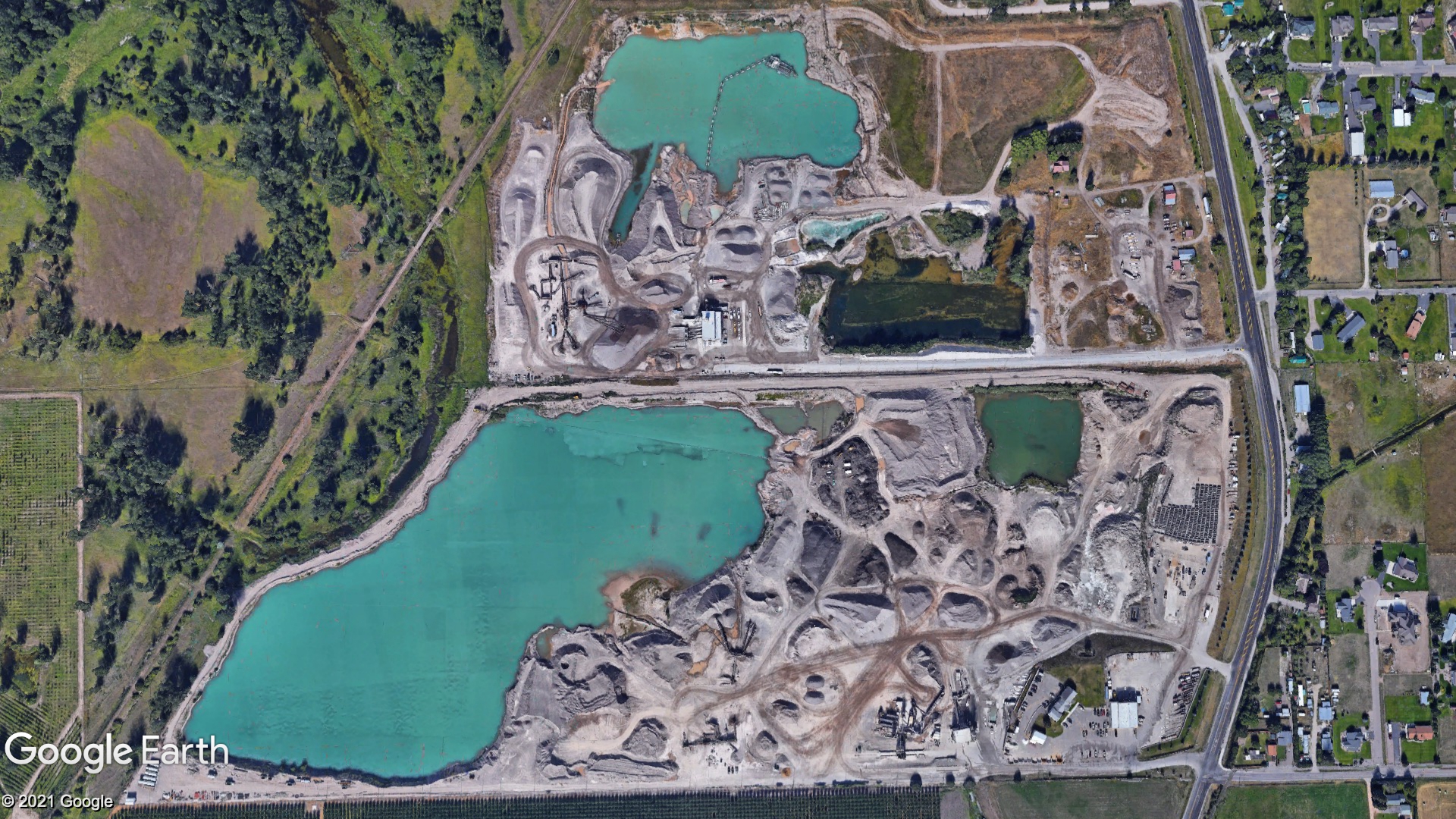
Messy Cleaning
As particles settle to the bottom of a basin, they stack on top of each other and reduce the pond’s usable volume. Therefore, most producers clean or “muck” their ponds to maintain capacity. You’ll see this done with dredging machines, front loaders, excavators, etc.
The issue is that the naturally settled particles don’t compact well, so the bucket loads are soupy. It can take a lot of time, labor, and sunken costs to clean a pond when your bucket loads are full of water. Plus, you can imagine the amount of water lost in the process.
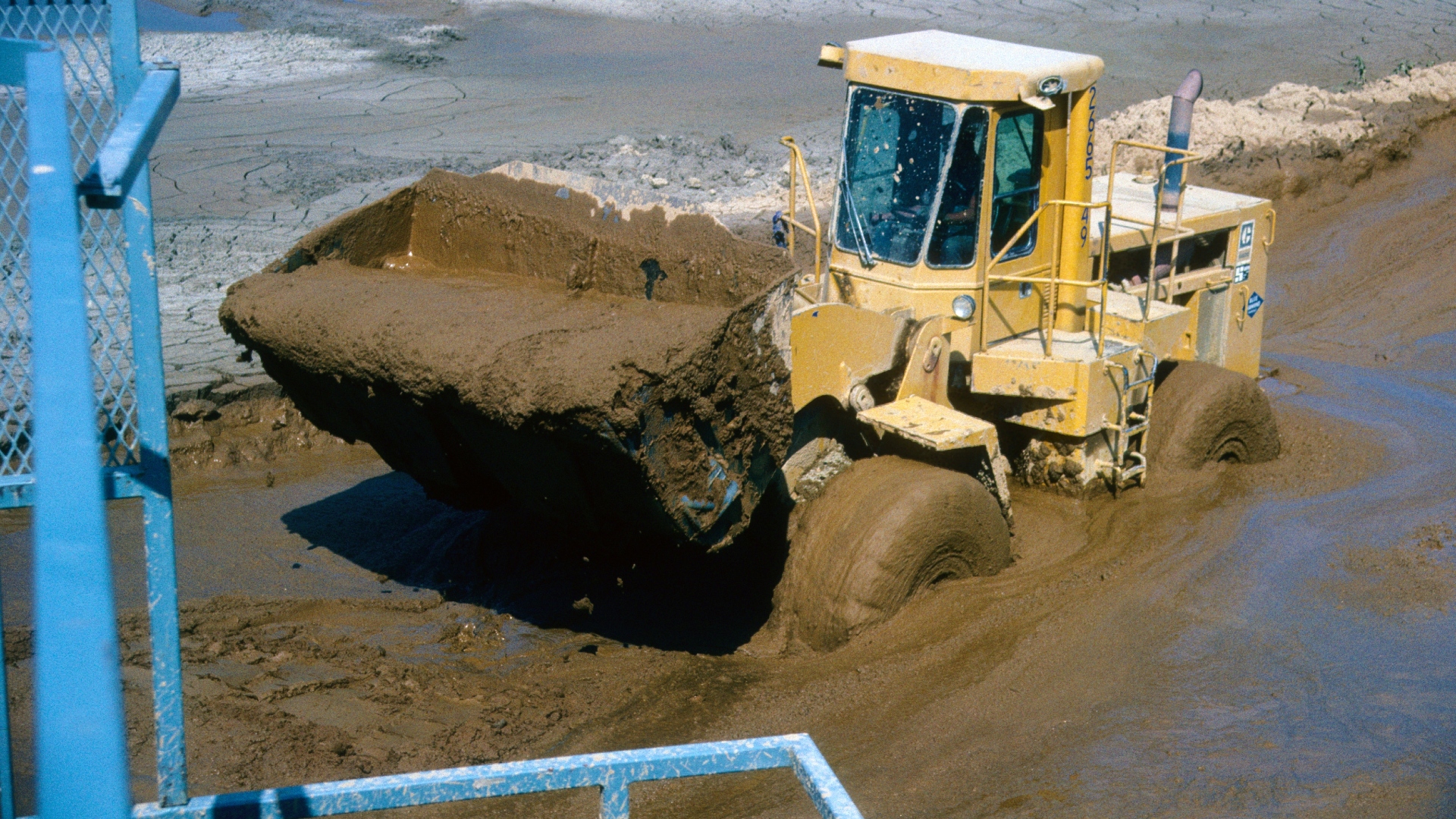
You may not have these issues based on the material you wash, the footprint of your operation, or permit requirements. Unfortunately, those who run into these issues can watch the problems add up and cost them money.
Polymer Systems Increase Settling Pond Efficiency
Polymer preparation and dosing machines help increase the efficiency of settling ponds through flocculation.
Flocculation is the process of pulling small liquid-suspended particles together into larger particle chains called macro-flocs. The larger particles have a higher mass-to-drag ratio, so they settle quicker.
Sometimes coagulants are added to neutralize charged particles before flocculants are added. For this post, we assume you’re familiar with coagulants and flocculants, but you can learn more here.
This jar test video shows what flocculation in a settling pond looks like in real-time.
The flocculation process increases the efficiency of a settling pond for your operation in a few ways.
Reduce Pond Maintenance
We discussed how cleaning settlement ponds is messy, but polymer flocculants can reduce the mess.
Because the particles are chemically activated to come together and settle quicker, they also compact more when they settle. The compact material makes it easier to get big bucket loads of mud or sludge instead of watery bucket loads. Tri-County Paving was able to reduce their pond cleaning from 3-4 days to 1.
Reduced pond maintenance time means less labor, fuel, and equipment maintenance costs. Many of our clients see the price of polymer covered by the fuel cost savings.
Plus, the material removed from a pond dewaters quicker due to the polymer treatment. In some cases, it can be dumped into a truck and hauled or removed from a dewatering pad in days vs. weeks.
Reduce Pond Footprint
As we discussed earlier, ponds and basins can take up valuable space. Their footprints can reduce product space that can make you money.
However, using polymers to settle your solids quickly can help you reduce the size and number of your ponds. Polymer flocculants cause the solids to settle quicker, usually within 30 ft of the discharge point. As the particles settle, clean water flows across the top of the pond.
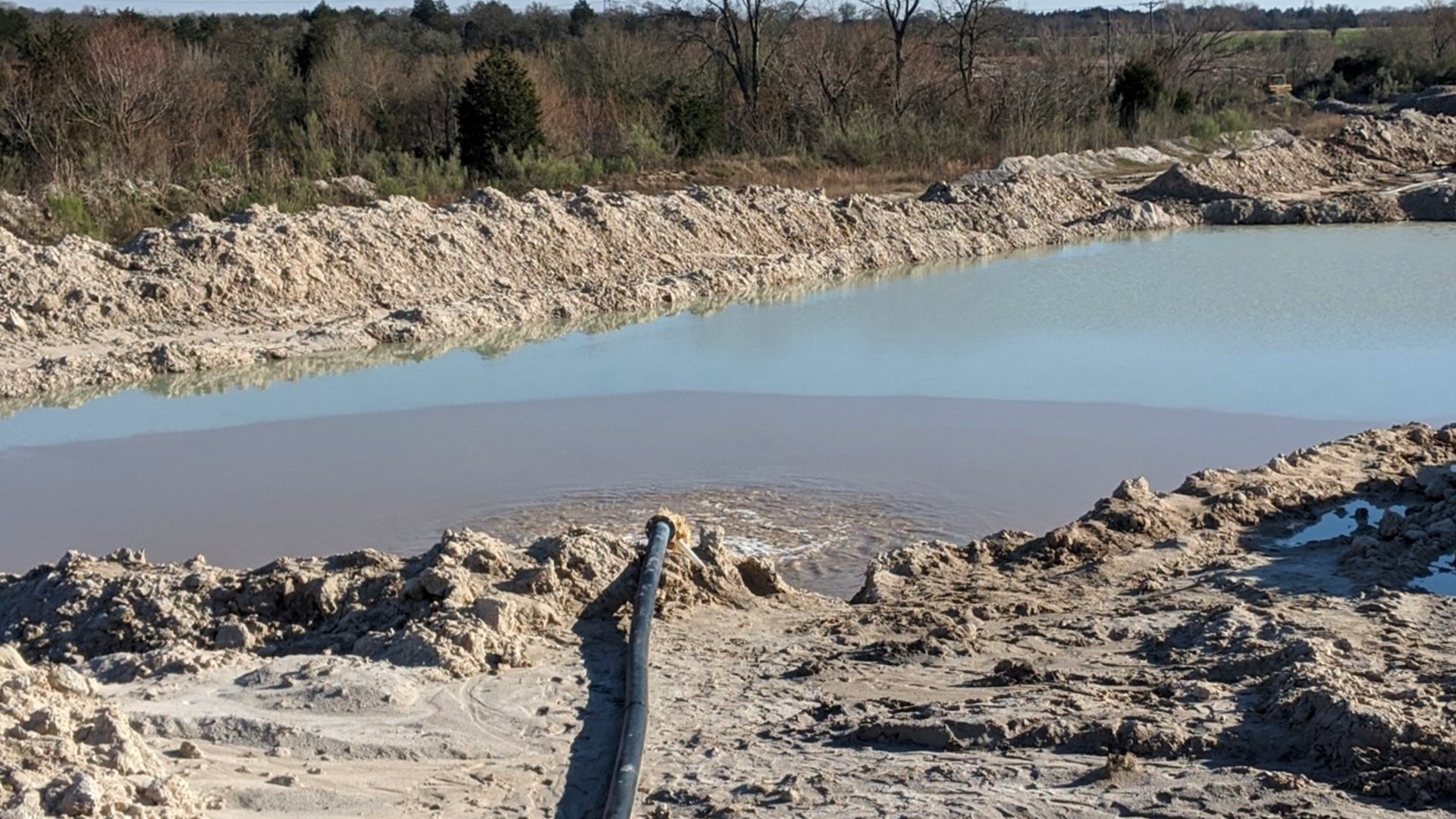
In some cases, you can access water from the same discharge pond and even pull clean water closer to the effluent discharge point. In other cases, a series of ponds can be boiled down to one discharge pond and one clean water pond.
With a reduced settling pond footprint, you can reclaim land for other use and access more sellable material.
Access Clean Water Quicker
Faster particle settling also helps you access clean water quicker, the same way it allows you to reduce your pond footprint. The picture below shows a clear distinction between muddy wastewater and clean water due to flocculation.
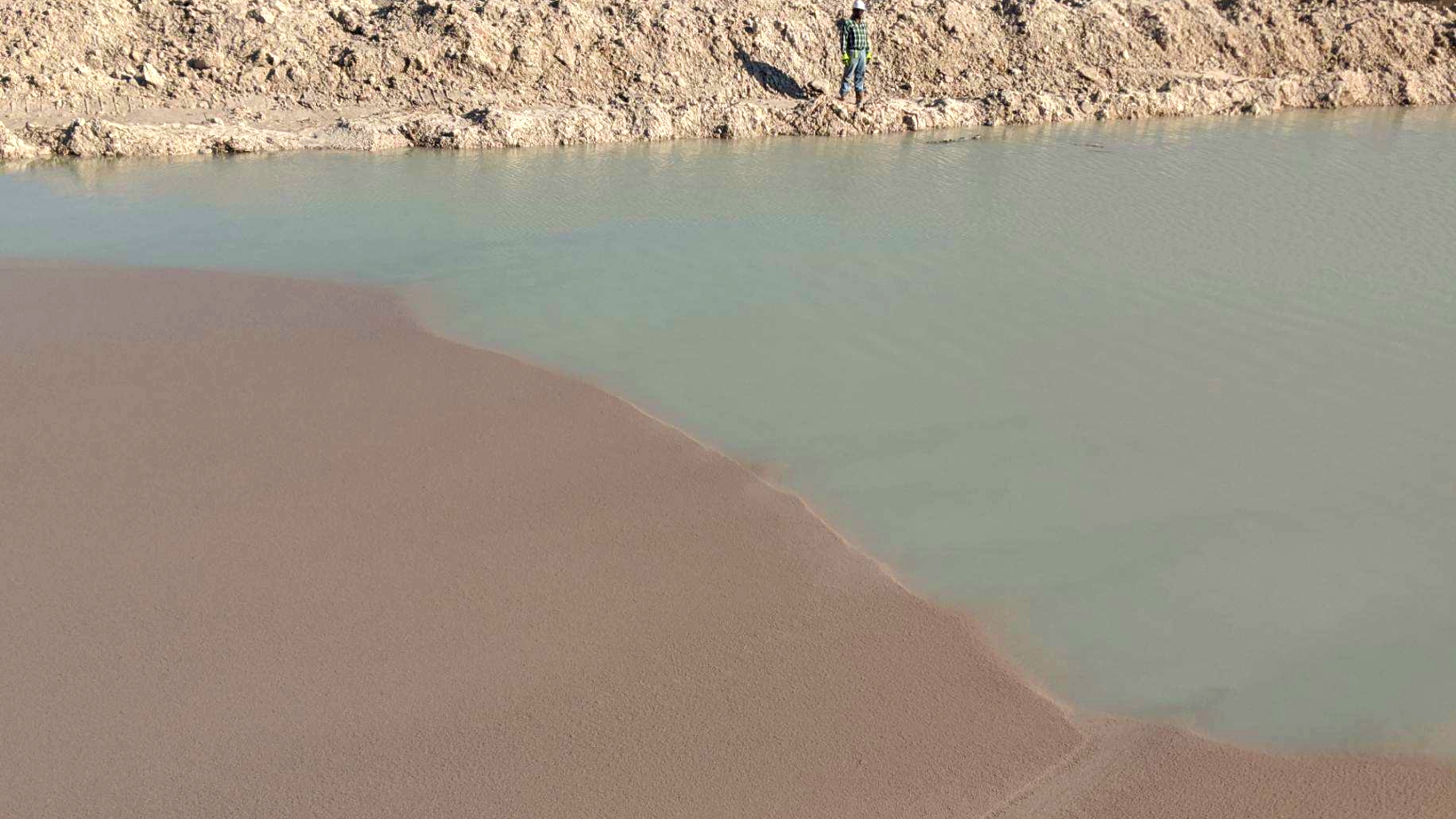
Now you don’t have to wait hours, days, or weeks for the particles to settle before you can get clean water. Consistent, clean water maintains your operation’s uptime and keeps your product in spec when you wash it.
The video below is from Lannon Stone, who uses the polymer to settle and compact their solids with no plan to clean the sludge out of the pond. They want to consolidate the solids until they fill the pit but need to clean water simultaneously. So, the polymer system keeps the solids settled and clean water on top for reuse. Now they don’t have to interrupt production while waiting for clean water.
Every operation has its own needs, processes, and requirements. Some producers maintain consistent operation with no pond treatment. Only you can determine the headaches and money lost through your settling pond maintenance.
One of the best first steps is to run a jar test to see if chemical treatment can settle the solids out of your wastewater. An experienced application engineer will run tests against a control sample to determine the best performing polymer solution. Jar test data coupled with flowrate information will allow the application engineer to recommend the best chemistry and equipment for your application.


